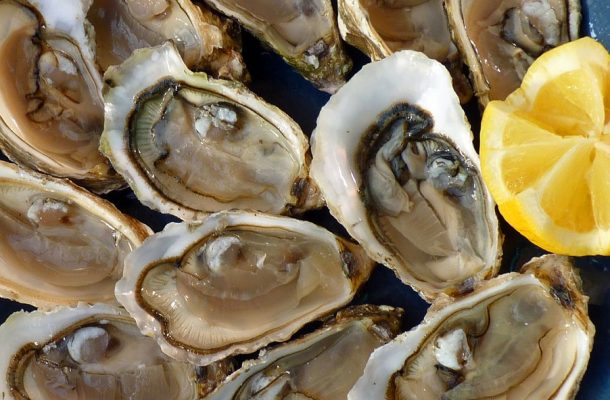Australia could help lead the world in shellfish aquaculture

As the world faces increasing pressures to conserve vulnerable ocean environments while also meeting a growing demand for protein, a new study has identified the parts of the globe with the strongest potential for development of commercial shellfish and seaweed aquaculture.
The locations highlighted are those that can deliver the best of both worlds: actively supporting the recovery of marine ecosystems while also providing food and jobs sustainably.
Published in the journal PLOS ONE, the study, titled A global spatial analysis reveals where marine aquaculture can benefit nature and people, represents a collaboration between scientists from international conservation non-profit The Nature Conservancy, NOAA’s National Centers for Coastal Ocean Science (NCCOS) and the University of Adelaide.
Regions highlighted for particular potential include Europe’s North Sea, the East China Sea, and the Southern California Bight, while some of the highest opportunity regions for shellfish aquaculture development centered in Europe, Oceania, and North America. At the same time, the best bets for seaweed aquaculture put pins on the map in Europe, Asia, Oceania, and South America.
With a growing body of evidence indicating that, when done well, the commercial production of shellfish and seaweed can generate food and jobs while also having a net-positive effect on the surrounding environment – filtering polluted waters and providing habitat for commercially-important seafood species – this study is the first of its kind to examine the global potential for this concept, which The Nature Conservancy refers to as ‘restorative aquaculture.’
“We already know that, done right, aquaculture shows tremendous promise for addressing some of our most significant food and environmental challenges. But, in order to maximize these benefits, we also know that location is essential – and some regions have stronger potential than others,” said lead author Dr. Seth Theuerkauf, Aquaculture Scientist at The Nature Conservancy.
Based on an extensive study of spatial data, the study’s results were also informed by engaging an international aquaculture expert panel that included representation from the World Bank, NOAA and Taylor Shellfish Farms, among other government, NGO, academic and industry bodies.
“The study brings together global- scale spatial datasets representing key environmental, socioeconomic, and human health considerations and provides insights into specific geographic regions where governments, international development organizations, and investors should prioritize new aquaculture efforts.
“By encouraging progress in public policy, capacity-building, and business planning, the study team hopes to help unlock the full economic and environmental potential of restorative shellfish and seaweed aquaculture,” Dr. Theuerkauf added.
The opportunity for restorative aquaculture is truly global – there are marine ecoregions within all inhabited continents that have significant potential for shellfish and seaweed aquaculture to provide benefits to ecosystems and people.
The top 10 highest opportunity regions for shellfish aquaculture development centered in Europe, Oceania, and North America, while the highest for seaweed aquaculture centered in Europe, Asia, Oceania, and South America.
Europe’s North Sea marine ecoregion was consistently identified as the highest opportunity marine ecoregion for restorative shellfish and seaweed aquaculture development.
The region’s coastal waters suffer some of the world’s most substantial nutrient pollution, widescale loss of shellfish reefs, and receives significant fishing pressure; commercial seaweed and shellfish farming could help to address some of these ecological challenges.
Some identified high opportunity marine ecoregions, such as the East China Sea, already have robust shellfish and seaweed aquaculture industries. In such cases, the authors suggest reform or modifications in aquaculture practices could improve or optimize ecological benefits of farms.
Other high opportunity regions, such as the Southern California Bight, have limited or virtually no existing bivalve and seaweed aquaculture operations and could environmentally and economically benefit from their development. And others, like Northeastern New Zealand, have an active shellfish aquaculture industry, but do not have an established seaweed aquaculture industry, which could help provide additional ecological function.
Where funds to support traditional coastal ecosystem restoration efforts are limited— particularly within low or lower-middle income nations—development of shellfish and seaweed aquaculture sectors could present a significant opportunity to aid coastal ecosystem recovery efforts and economic development.
“Commercial shellfish and seaweed aquaculture present a rare opportunity to utilize commercial enterprise to directly benefit the health of our oceans and improve human wellbeing,” said Robert Jones, Global Lead for Aquaculture at The Nature Conservancy. “This publication is a key step in improving our understanding of where and how that’s possible.”
The Nature Conservancy is a global conservation organization dedicated to conserving the lands and waters on which all life depends. Guided by science, we create innovative, on-the-ground solutions to our world’s toughest challenges so that nature and people can thrive together.
Open Forum is a policy discussion website produced by Global Access Partners – Australia’s Institute for Active Policy. We welcome contributions and invite you to submit a blog to the editor and follow us on Twitter, Facebook, Linkedin and Mastadon.











